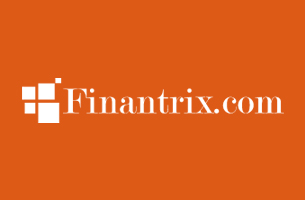Comparative raters, also known as insurance rating engines or comparison tools, are software applications or online platforms used by insurance agents, brokers, and sometimes consumers to obtain and compare insurance quotes from multiple insurance carriers simultaneously. These tools help streamline the quote comparison process, making it easier for agents and consumers to evaluate and choose the best insurance policy based on coverage, price, and carrier reputation.
Comparative raters are commonly used for personal lines of insurance, such as auto, home, and renters insurance. Still, they can also be used for commercial lines and other insurance policies.
Here’s how comparative raters work in the insurance industry:
- Data input: Users enter relevant information about the insured or the property to be insured, such as personal details, driving history, or property characteristics, into the comparative rater system.
- Carrier integration: The comparative rater sends this information to multiple insurance carriers through API (Application Programming Interface) connections or other data exchange methods. The carriers’ underwriting systems then process the information and generate quotes based on their specific rating algorithms and underwriting guidelines.
- Quote comparison: The comparative rater retrieves the quotes from the various carriers and presents them in a user-friendly format, allowing the user to compare the coverage options, premiums, deductibles, and other relevant policy details side by side.
- Selection and application: Once the user selects the most suitable policy, the comparative rater can help facilitate the application process, transferring the necessary information to the chosen carrier and initiating the binding process.
Comparative raters offer several benefits for insurance professionals and consumers, including:
- Time-saving: By generating multiple quotes simultaneously, comparative raters can save significant time and effort compared to obtaining quotes from individual carriers separately.
- Efficient decision-making: Comparative raters enable users to quickly evaluate and compare policy options, helping them make informed decisions about coverage and pricing.
- Competitive pricing: Access to multiple quotes allows users to identify the best possible rates and coverage for their specific needs, ensuring they receive the most competitive pricing.
- Enhanced customer service: For insurance agents and brokers, comparative raters can help them provide better customer service by offering a more comprehensive range of options and faster response times.
An Insurance Rating Agency Platform (IRAP) is a software solution or online platform designed to streamline and automate various aspects of the insurance rating process. IRAPs are used by insurance carriers, agents, brokers, and sometimes consumers to generate accurate and up-to-date premium quotes for different lines of insurance.
While the specific features and functionality of an IRAP may vary depending on the provider and target audience, most platforms include the following core capabilities:
- Rating engine: The heart of an IRAP is the rating engine, which calculates premium rates based on the input data, such as insured demographics, coverage details, and risk factors. The rating engine typically incorporates participating insurance carriers’ latest underwriting guidelines, rating rules, and pricing algorithms.
- Multi-carrier support: IRAPs often support multiple insurance carriers, allowing users to simultaneously obtain and compare quotes from different providers. This helps users find the best policy options and competitive pricing based on their needs and preferences.
- Policy management: Many IRAPs include features for managing and tracking policy information, such as policy numbers, coverage details, effective dates, and renewal dates. This helps users stay organized and maintain accurate records.
- Integration with carrier systems: IRAPs often integrate with insurance carriers’ underwriting systems through APIs (Application Programming Interfaces) or other data exchange methods, enabling seamless communication and data transfer between the IRAP and carrier systems.
- Data input and validation: IRAPs typically provide user-friendly interfaces for inputting and validating the necessary data to generate quotes. This can include built-in error checking and data validation features to ensure accurate and consistent data entry.
- Reporting and analytics: Many IRAPs include reporting and analytics features, enabling users to generate reports on quote activity, conversion rates, and other key performance indicators. These insights can help users identify trends, monitor performance, and make informed decisions about their business.
- Customization and configuration: IRAPs often allow users to customize and configure the platform to match their unique workflows, preferences, and business requirements. This can include adding or modifying rating rules, adjusting underwriting guidelines, and configuring user access levels and permissions.
- Security and compliance: IRAPs typically incorporate robust security features and protocols to protect sensitive data and ensure compliance with industry regulations, such as data encryption, secure data storage, and user authentication.
- Integration with agency management systems (AMS): Many IRAPs can integrate with agency management systems, which allows agents and brokers to streamline their workflows and manage their book of business more effectively.
- Customer support and training: IRAP providers typically offer customer support and training resources to help users maximize the platform’s benefits and troubleshoot any issues they may encounter.









